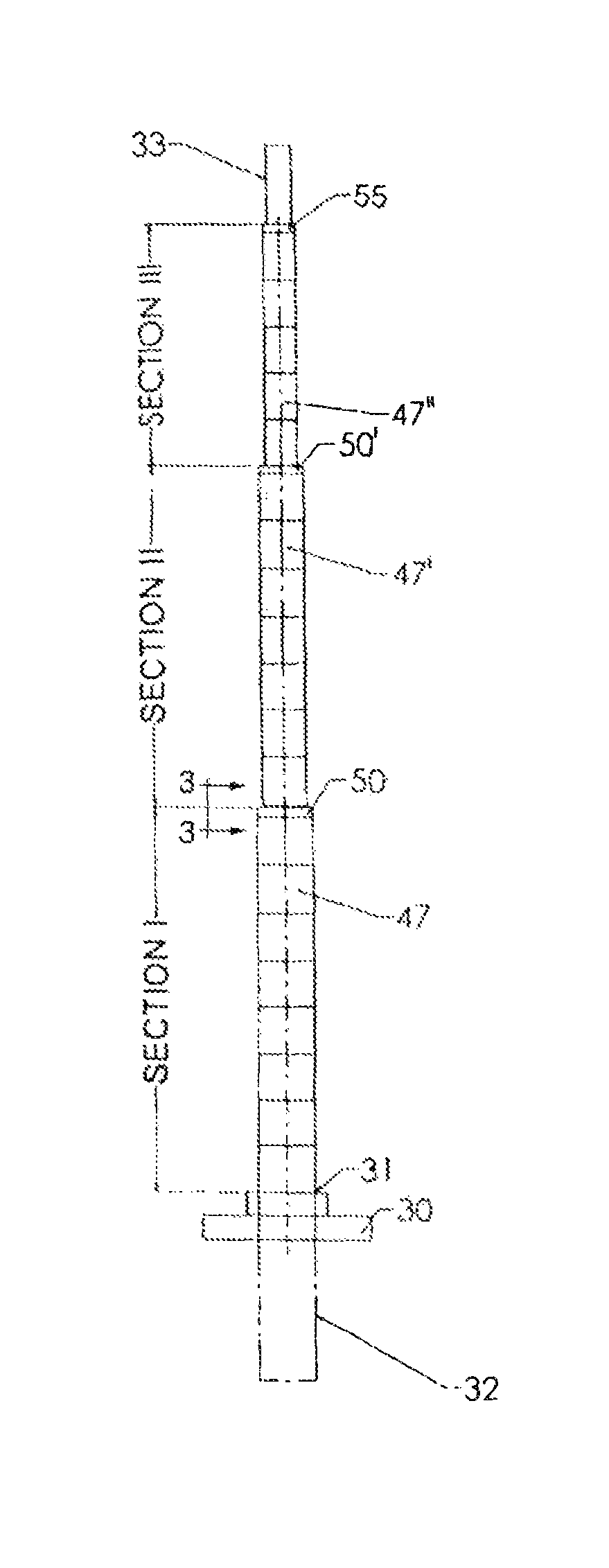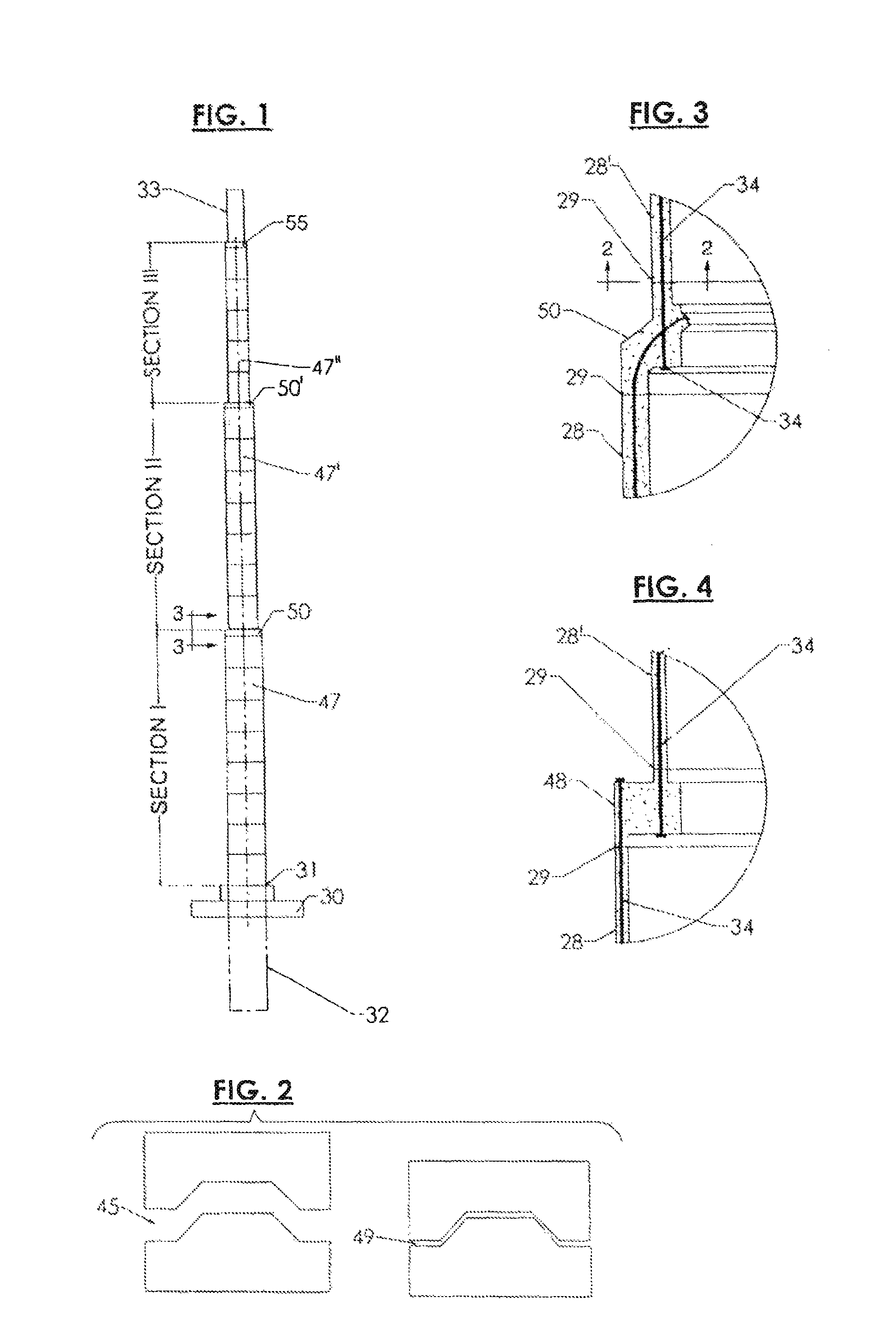Precast concrete post tensioned segmented wind turbine tower
a technology of precast concrete and wind turbines, which is applied in the direction of machines/engines, mechanical equipment, foundation engineering, etc., can solve the problems of reducing the speed of construction, limiting the height of steel towers, and limiting the tower height to approximately 300 ft. using conventional strength,
- Summary
- Abstract
- Description
- Claims
- Application Information
AI Technical Summary
Benefits of technology
Problems solved by technology
Method used
Image
Examples
Embodiment Construction
[0038]A stepped tower is shown in FIG. 1 and is assembled using annular and cylindrical precast concrete tower segments 47, 47′ and 47″ with transverse (horizontal) joints 29 (FIGS. 3 & 4) that are match cast together to achieve a precision fit between adjacent segments. The match cast joint detail 45 is shown in FIG. 2 and incorporates a shear key configuration used to transfer shear across the segmental joints under transverse loads to the tower and to assist in the alignment of one segment with each adjacent segment. Epoxy is applied onto the bottom surface of the joint 45 of FIG. 2 prior to closing the gap 49 between the two segments. The epoxy serves the purpose of a lubricant during the segment placement operation and also as a sealing of the joint after the epoxy cures.
[0039]At each step or change in diameter of the tower structure, a transition annular donut member or segment or anchor member 48, 50 or 50′ (FIGS. 3-6) transfers the forces through the geometry transition and ...
PUM
 Login to View More
Login to View More Abstract
Description
Claims
Application Information
 Login to View More
Login to View More - R&D
- Intellectual Property
- Life Sciences
- Materials
- Tech Scout
- Unparalleled Data Quality
- Higher Quality Content
- 60% Fewer Hallucinations
Browse by: Latest US Patents, China's latest patents, Technical Efficacy Thesaurus, Application Domain, Technology Topic, Popular Technical Reports.
© 2025 PatSnap. All rights reserved.Legal|Privacy policy|Modern Slavery Act Transparency Statement|Sitemap|About US| Contact US: help@patsnap.com



